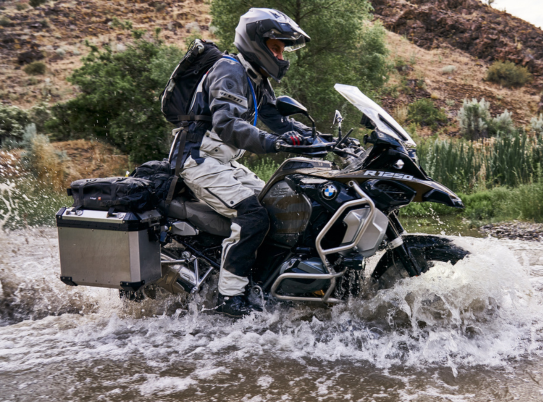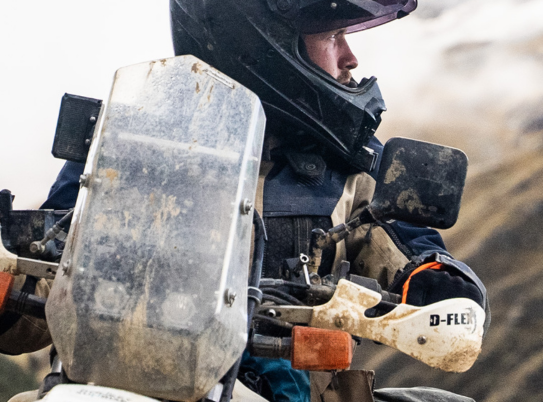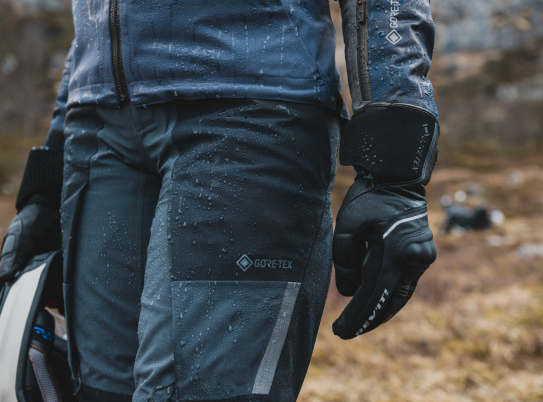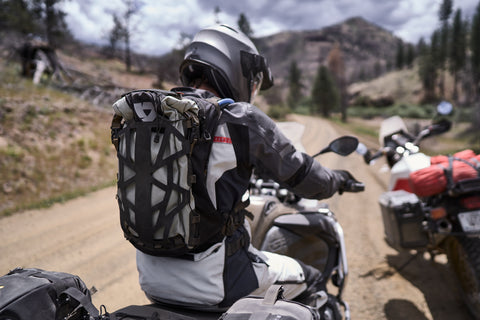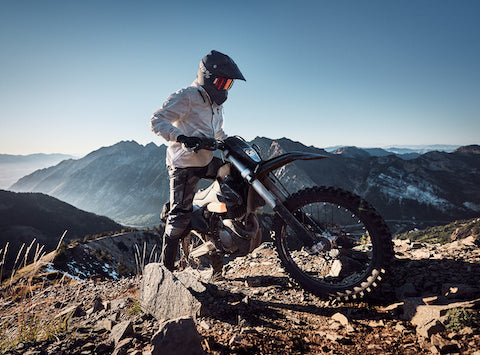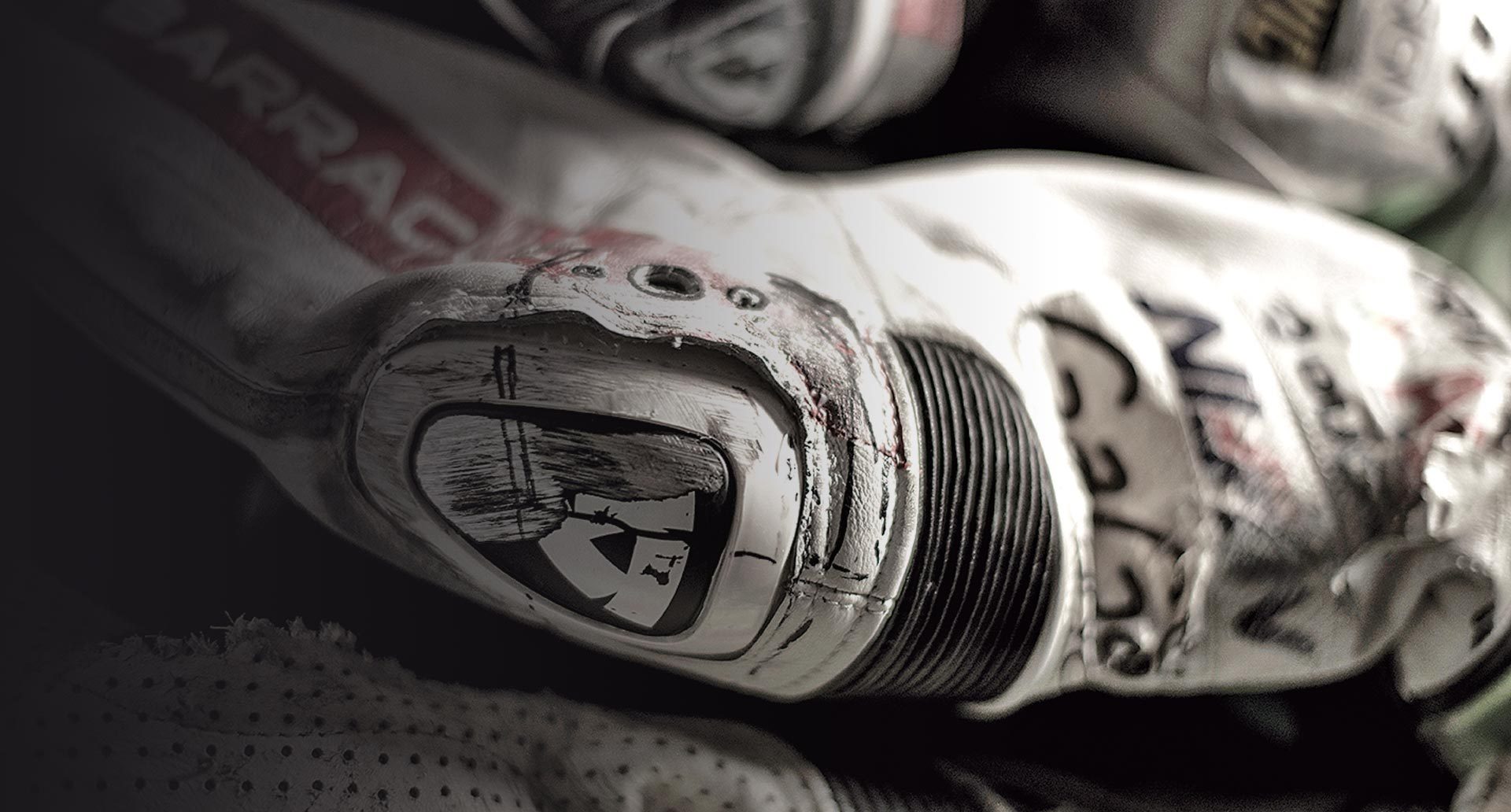Validating Real-world Results
In an unassuming room - walls painted white, florescent lights overhead, computers decorating workstations – stands a large dresser. In this large dresser hangs a jacket. It’s a jacket that confirms the validity of using an in-house testing lab. A lab that – as sterile as it might look – yields real-world results in terms of motorcycle clothing durability, strength and safety.
What makes this jacket so special? After all, it has seen better days. It’s tattered. Ripped to shreds in some areas, and unscathed in others. Though the thank-you note written in Spanish, in permanent marker, on the bottom left corner speaks volumes.
The rider who was wearing this jacket was unfortunately in an accident. They slid across the pavement, suffered no injuries, and walked away, body in-tact and a smile on their face. They then sent his jacket back to REV’IT! to say “gracias” for saving their skin.
Looking at the jacket, it did exactly what it was supposed to do: it protected the rider. The lining was still perfectly in place, though the outer shell suffered noticeable damage. The stationary protection at the elbows and shoulders didn’t move an inch, though it had some war wounds.
In the end, the jacket respectively won the battle against the unyielding pavement.
No Luck,Just Science
The lab techs at REV’IT! then replicated the type of slide that occurred with their in-house equipment and got almost identical results. We joke that no luck is involved when predicting how the materials used in motorcycle clothing react in certain situations. It’s science. This science is invaluable to creating some of the most durable, strongest and safest riding gear out there.
Knowing how materials behave when faced with adversity is why riders put their trust in specific brands. It’s also what makes the lab so fundamental to development of motorcycle garments. To add to that, our clothing must pass stringent tests in order to be introduced to the market, though our lab does much more than that. It also serves as a tool for research and innovation projects.
The analysis of data is cornerstone of the work done in the facility but not the only task at hand. Part of the lab’s mission is to find out how the materials perform – whether that’s leather or textile – and how well they perform. It’s also to find out if there are better solutions or better constructions when creating new collections.
Sometimes, high-tech fabrics are tested, and sometimes some of the more conventional ones are. Regardless of quality, it’s about bringing the rider something they can feel safe in, as well as look good in.
While some might think the lab is solely used by the technicians, it’s not. For our product developers, as well as our Research and Innovation team, the lab is at their disposal to test new fabrics, constructions and create and test prototypes. You can find them frequenting the lab for continued betterment. Tests are done every day and also on-demand and the data can be readily processed. In the early days, materials had to be sent out to external facilities and then the waiting game started. Now, results can be produced, quickly, effectively and accurately.
Going Beyond CE StandardsThe Rev'it Standards
Each machine in the lab has a very specific purpose and specific theme. Nothing is there for show. Compliance with EN and CE standards are required but our own standards far exceed a pass/fail rating. That’s just not good enough for us.
A REV’IT! standard is essentially determined by our riders; meaning how it’s used, feedback from the market, wishes from clients, feedback from ambassadors/testers. We need a standard that’s adapted to real-life motorcycle use. Here, we analyse the mechanics of how we end up with the results that we get to.
What that means is that we don’t just look at the outcome of the test, but we dig deeper into the whole process. We look at how the materials have performed on a microscopic level.
Insight Into the tests
How do we get to where we get to? We’ll give you some insight into our testing processes and what makes them so effective in the real world.
Hydrostatic Head Tester
We use a hydrostatic pressure test to determine the resistance to water penetration of a given material. It sounds technical because it is. When we say we keep you dry, we make sure we mean it, especially in terms of using GORE-TEX® technology. There are two types of tests our machine can perform: dynamic or static.

In a dynamic test, we gradually build up hydrostatic pressure via an air compressor. At first, the material lays flat and then raises and raises. Essentially, it forms the shape of a balloon. What we’re checking for is water penetration in terms of droplets. It’s not about saturating the fabric, but as soon as three droplets get through the fabric, the test is over. Three droplets are the norm because of the EN standard.
In the end, we can derive the water column of a fabric. Though sometimes a fabric explodes under the pressure of the test! We make sure these materials are not used in our garments. It also shows how much water and pressure are pushing a fabric.
Because the fabrics we test are for motorcyclists, we have a higher demand for water column. That’s because these garments are more susceptible to the elements while riding due to riding position, speed, etc.
The static test is based on pressure and time. We can mimic a motorcyclist riding in the rain, for instance, for a couple of hours through a rain shower - which can be light, heavy, long, and a scope of tests. But in order to make full use of this test, we also gather the feedback from our global riders, to make sure we – to determine if the fabric withstands a shower over a period of time. We make this endurance based.
In terms of waterproofing, we also test taped seams, too. We investigate their breaking point, leakage, strength. We carry out same both the dynamic and static procedures as with materials. Leave no leaf unturned, right?!
Tensile Tester
We use a tensile tester to analyze the tear and seam strength of a fabric. If we are testing tear strength, then we use pre-cut, trouser-shaped, pre-slit fabric. The “legs” are clamped into the holders and the machine tears the fabric apart. Here we measure the force that’s needed to tear the fabric apart. We do the same for seam strength; though we also measure the force that’s needed to tear the seam apart.


Impact Energy Absorption
To test the impact absorption and distribution of our protectors we use an impact testing machine. A protector is placed on an anvil, and a striker is dropped on the protector. We can use a selection of different anvils (shapes, sizes and weight) and strikers depending on the test but also depending on the protector. A load cell underneath the anvil measures the left-over force. The amount of left over force determines which rating the protector will receive.
Cut Resistance
Cut resistance is measured for gloves. To execute the test, a material is placed in a holder and a counter-rotating circular blade is moved back and forth at a constant speed. When the blade cuts through, it hits a conductive plate and the machine stops cutting. The number of revolutions completed by the blade is recorded to determine the cut resistance.


Impact Abrasion Resistance
During the impact abrasion resistance test, we use a machine that mimics a fall and slide of a motorcycle rider on a concrete road surface. This is a specific test for fabrics. The fabrics are attached to a rotor via one of three sample holders. The sample holders have a rubber pad that is designed to replicate the bone and flesh density of your lower back and shoulders.
The rotor speeds up and then mimics the fall and slide. What we’re looking for is any hole formation. We also look for tears, bursts, melting, and look how the fabric behaves on the machine. Furthermore, we let the material come to a gradual standstill on the concrete surface, not an abrupt stop, similar to what you’d experience out on the road in “real life.”

Dimensional Stability
Before we test any fabric, we have to wash them/it five times. Because motorcycle garments are considered a safety garment, there can’t be any stretch or shrinkage in the fabric itself. Why? For example, if you wash your jacket or trousers that have removable protectors, and the garment shrinks - or stretches in the process - the protectors could potentially shift in location. And a shift in protector location means the armour won’t cover you properly. This is not what we’re after.
It’s also important to keep in mind we’re not just using any in-house washing machine, but one that is very specific to materials testing in laboratories. We are talking about safety garments that give you a proper fit no matter how many times you wash it. We test the structural integrity of the fabrics after washing to see if the fabric has been compromised in any way. And we make absolutely no compromises when it comes to your safety.
Results for A New Level
Through the various processes, the lab continues to gather results from different tests. But it doesn’t end there. They take that same test but take it to a new level or come at it from a different angle.
Instead of replicating a slide in the dry, they can make the conditions wet. Or instead of it being on a smooth surface, it can be replicated on a more abrasive surface.
Those are just a few examples of the limitless possibilities they can mimic. Creating the real-life situations as best and as accurately as possible without having to risk human lives in the process is what makes this so effective.
We never stop Exploring
The CE regulations make sure it’s safe enough for the intended use, but as a design company focused on the creation of motorcycle clothing, the desire is to make sure it’s more than that. We’ll never stop exploring. We’ll keep on pushing the boundaries in terms of comfort, safety and performance.

